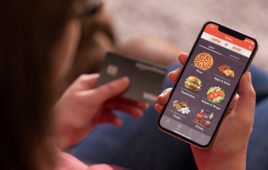 The Brand Keys 2016 Customer Loyalty Engagement Index has identified the beverage brands that are meeting customer’s emotional values.
The Brand Keys 2016 Customer Loyalty Engagement Index has identified the beverage brands that are meeting customer’s emotional values.
The 21st annual Brand Keys Customer Loyalty Engagement Index (CLEI) has reported that emotional engagement has recently become more difficult to achieve for beverage companies. Emotional engagement is considered a leading-indicator of consumer behavior, sales and corporate profitability, and achieving emotional engagement is becoming more difficult for beverage companies as the key drivers of brand engagement continue to shift toward emotional values in the majority of the 72 categories surveying 635 brands in Brand Keys 2016 CLEI.
Beverage Brands Best Meeting Consumer’s Emotional Engagement Values
There were five non-alcoholic beverage categories included in Brand Keys’ 2016 assessments. The brands seen to best meet consumers’ expectations for emotional category engagement values (in parentheses) were seen to be:
- Bottled Water: Dasani (Purity Is Essential & Compulsory)
- Out-of-Home Coffee: Dunkin’/Starbucks (I Want A Customized Experience)
- Packaged Coffee: Dunkin’ Donuts (A Real Sensory Association With the Brand)
- Soft Drinks (Regular): Pepsi (My Good Taste)
- Soft Drinks (Diet): Diet Coke (Healthier For My Whole Family)
“The consumer engagement process today is more dependent on emotional values than ever,” said Robert Passikoff, president of Brand Keys. “As rational attributes have become price-of-entry ‘givens’ for today’s consumers, emotional values have become more problematic for brands, not brand outreach or messaging, but how to accurately determine which emotional values a brand should leverage to emotionally engage consumers. These are the values that describe how consumers view the category, will compare brands and how they will engage with a brand, buy, remain loyal and profitable.”
Engagement Correlates Highly With Brand Profitability
“If a marketer can increase a brand’s engagement level – particularly the emotional values – they’ll always see positive consumer behavior in the marketplace. Always,” noted Passikoff. “Axiomatically, brands that can do that always earn greater market share and are more profitable than the competition. To succeed, marketers need to accurately answer these questions, ‘what drives my category, what are the emotional engagement values I need to focus on, how can my brand exceed consumer expectations for those emotional values?’ To their detriment, most brands can’t. As a result they rely largely on imagery or entertainment as proxies for emotional engagement. They’re not the sane things!” stated Passikoff.
Categories Are Expanding Every Year
Brand-expansion in several categories, added 83 new brands to the 2016 CLEI survey.
“The increased number of brands appearing in consumers’ consideration sets, confirms the category volatility brands will face in the marketplace,” noted Passikoff.
The CLEI brand lists aren’t pre-determined. Consumers tell Brand Keys researchers which brands they actually use. When consumers mention new brands at a significant level, it’s an indicator that current options do not meet their needs. And when that happens, consumers look to other brands to do that for them.
“Today it’s the emotional side of that equation brands need to concentrate on,” noted Passikoff. “The rational stuff is easy. Profitability has become far more difficult.”
Methodology
For the 2016 survey, 42,792 consumers, 18 to 65 years of age from the nine U.S. Census Regions, self-selected the categories in which they are consumers, and the brands for which they are top-20% customers. 70% were interviewed by phone, 25% via face-to-face interviews (to identify and include cellphone-only households), and 5% online. Brand Keys uses an independently validated research approach that fuses emotional and rational aspects of the categories. The research technique is a combination of psychological inquiry and statistical analyses, has a test/re-test reliability of 0.93, and provides results generalizable at the 95% confidence level. It has been successfully used in B2B and B2C categories in 35 countries.
The output identifies the four behavioral drivers for the category-specific ‘Ideal,’ and identifies the emotional and rational values (and their percent-contribution to engagement) that form the components of each driver. Drivers – and their component values – are category-specific since consumers don’t buy smartphones the same way they buy cosmetics or pizza. The engagement and loyalty assessments measure how well brands meet expectations that consumers hold for each driver that makes up the category-specific Ideal.




